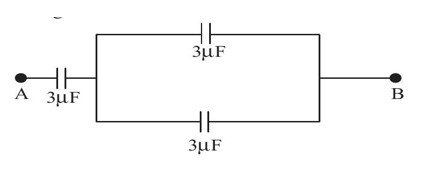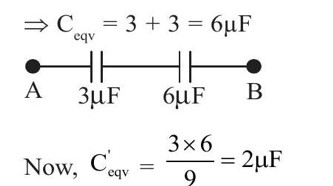Class 12th
Get insights from 12k questions on Class 12th, answered by students, alumni, and experts. You may also ask and answer any question you like about Class 12th
Follow Ask QuestionQuestions
Discussions
Active Users
Followers
New answer posted
2 months agoContributor-Level 10
A total refractive prism is also known as a total internal reflection prism. It is an optical prism that is designed for reflecting 100% of the incident light. This happens since this prism uses the principle of total internal reflection. These prisms are oriented and shaped in a specific way so that the light that enters at a specific angle is completely reflected inside the prism. A right-angle prism, porro prism, dove prism and roof prism are some of the examples of total reflective prism.
New answer posted
2 months agoContributor-Level 10
In a prism, the light ray undergoes refraction twice as it passes through a prism. Let us take a look at both types of refraction.
The first refraction takes place when a light ray enters the prism from air or another medium into glass. It then bends toward the normal if the prism material is denser (n>1)
During the second refraction, the light ray exits the prism again into air, it then bends away from the normal. In case, the angle of incidence is too steep, total internal reflection may occur at the second interface of prism, which prevents the ray from exiting. When this happens, there is only one refraction and one reflection.
New answer posted
2 months agoContributor-Level 10
Total deviation in a prism is the total angle by which the light ray gets bent as it passes through the prism. It is an angle between incident ray and emergent ray of the prism. When a light enters the prism, it will bend towards the normal. After that, it will travel through the prism and bend away from the normal as it exits. Total deviation is the sum of these two from which the apex angle is subtracted.
The formula for total deviation for a prism is as follows:
- : angle of incidence at first surface
- : angle of emergence at second surface
- A: apex angle of the prism
New answer posted
2 months agoContributor-Level 10
Hydrogen shows many spectral lines because of the following reasons.
Its electron can occupy many levels (n = 1, 2, 3.).
Each line in the hydrogen spectrum actually represents the transition from higher to lower energy levels.
These lines are grouped by the final energy level (Lyman n'=1, Balmer n'=2, etc.)
Higher energy levels are closer together. They tend to create more possible transitions.
New answer posted
2 months agoContributor-Level 10
Hydrogen produces a line spectrum because electrons exist only in discrete, quantised energy levels. When electrons jump between these fixed energy states, they emit photons with specific energies (E = h? ). This creates distinct spectral lines instead of continuous wavelengths. Bohr's model explains this through quantised orbits. Classical physics, on the other hand, would predict a continuous spectrum.
New answer posted
2 months agoContributor-Level 10
The hydrogen emission spectrum contains several spectral series, each named after its discoverer.
- Lyman series (n' = 1): To ground state, visible only in ultraviolet region
- Balmer series (n' = 2): Transitions to second level, appearing in visible region
- Paschen series (n' = 3): Moved to third level, visible in the infrared region
- Brackett series (n' = 4): Transitions to fourth level, appearing in the far infrared region
- Pfund series (n' = 5): Transitions to fifth level, showing in the infrared region
- Humphreys series (n' = 6): Transitions to sixth level, appearing in the infrared region
New answer posted
2 months agoContributor-Level 9
First band ![]() = Red
= Red
2nd band = Red
3rd band = Orange (Multiplier)
4th band Gold (Tolerance)
Taking an Exam? Selecting a College?
Get authentic answers from experts, students and alumni that you won't find anywhere else
Sign Up on ShikshaOn Shiksha, get access to
- 65k Colleges
- 1.2k Exams
- 679k Reviews
- 1800k Answers


